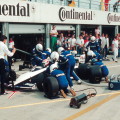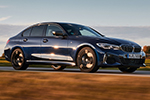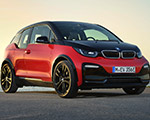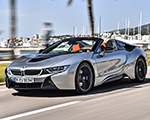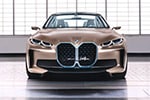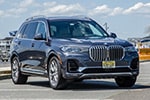Porsche’s decision to withdraw from the FIA World Endurance Championship after the 2025 season has sent shockwaves through the racing world. After years of being one of endurance racing’s defining forces, the Stuttgart brand will no longer compete in the Hypercar class. For BMW, which is preparing a major push for 2026, that news is both an opportunity and a warning.
BMW M Motorsport is deep in development on a refreshed M Hybrid V8, the brand’s flagship endurance prototype. Set to compete in both the FIA WEC and IMSA series, the 2026 car introduces a series of meaningful updates aimed at sharpening performance across an increasingly competitive field. Beyond the slightly smaller kidney grilles — which still retain contour lighting — the M Hybrid V8 now features a redesigned front splitter and reworked bodywork to improve aerodynamic efficiency and cooling performance.
The changes are subtle but functional: airflow has been rerouted for better heat management, allowing the car to maintain consistent performance over longer stints and at a wider range of tracks. The front headlights have also been updated and now appear more compact, while additional camouflage hides tweaks that will debut officially before the 2026 season opener at Daytona.
In short, BMW isn’t standing still. The company is methodically building on what it learned through its return to top-level endurance racing in 2024 and 2025. The next evolution of the M Hybrid V8 marks a turning point: from proving it belongs, to proving it can win.
A Changing Landscape in Endurance Racing

That mission just became a little more achievable. Porsche’s withdrawal from WEC removes one of BMW’s toughest rivals — and one of endurance racing’s most decorated brands. Few names carry the kind of weight Porsche does at Le Mans. Their factory 963 Hypercars, run by Penske, have been consistent front-runners and podium contenders. Without them, BMW’s odds of climbing higher in the standings improve noticeably.
But Porsche’s exit is also a loss for the sport. It takes away a familiar name, a passionate fan base, and one of the storylines that make endurance racing so compelling. Much like Formula 1 thrives on its major rivalries, WEC benefits when the heavyweights go head-to-head. Porsche versus Ferrari, Toyota, BMW — these are the matchups that give Le Mans its grandeur. Without Porsche, the Hypercar grid feels a little less complete.
Still, BMW’s timing is uncanny. The brand’s full-season WEC effort with BMW M Team WRT is ramping up just as the competitive landscape begins to shift. The Belgian team has already demonstrated its capabilities in GT racing, and the collaboration with BMW M Motorsport has grown into a cohesive works partnership. That alliance will be central to BMW’s 2026 campaign, particularly at Le Mans — where the company hasn’t claimed an overall victory since 1999 with the V12 LMR. The duo will also run the 2026 IMSA championship after BMW parted ways with its long-time partner Rahal Letterman Laningan Racing.
The Stakes of Le Mans 2026
For BMW, Le Mans remains unfinished business. The company’s last overall win came more than two decades ago, in an era before hybrids and balance-of-performance debates. That history adds emotional weight to every return. Porsche’s departure doesn’t guarantee success, but it does make the path to a major result more open than it has been in years.
The 2026 race could become BMW’s best shot yet at reclaiming endurance glory. A strong result — or a long-awaited victory — would validate years of investment and justify keeping the program alive amid growing cost pressures. But it’s also a season that will test BMW’s long-term resolve. The company recently issued more cautious financial guidance, citing market uncertainty and potential headwinds in China. In such a climate, even a brand as committed to motorsport heritage as BMW has to weigh every investment carefully. Motorsport is part of its DNA, but it’s not immune to boardroom scrutiny.
A Window of Opportunity — and Responsibility
BMW’s engineers and leadership now face a rare moment in time. With Porsche gone, the brand’s M Hybrid V8 program has a clearer lane to define itself — but also greater responsibility to carry the torch for manufacturer-backed competition. It must not only deliver performance, but uphold the prestige of the category itself.
At the same time, new players are entering the field. Genesis is expected to join WEC next year, adding another manufacturer to the mix. Toyota, Ferrari, and Cadillac continue to refine their prototypes, while Alpine pushes forward with renewed factory backing. BMW will face fierce opposition, but for once, it won’t be fighting from the back foot.
The Future Beyond 2026
It’s unclear how long BMW will commit to its LMDh program beyond 2026. Officially, the company has reaffirmed its long-term engagement, even as it transitions away from its long-standing partnership with Rahal Letterman Lanigan Racing in IMSA. What is certain is that 2026 will be a defining season. The updated M Hybrid V8 represents a more mature and refined race car, backed by a team growing in experience and confidence. Porsche’s exit gives BMW a wider stage — and perhaps a clearer path to the top step of the podium. But it also raises expectations. If BMW can deliver at Le Mans, it won’t just be a symbolic victory; it will be proof that the company can thrive at the highest level of endurance racing in a new era.
And if it does, perhaps the story of Le Mans 2026 won’t be about who left — but about who finally arrived. [Porsche photos provided by Porsche Newsroom for editorial use]











